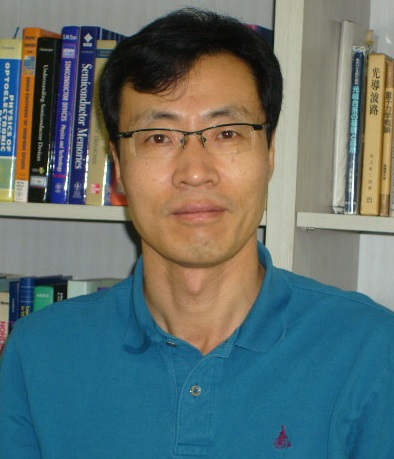A breakthrough in the development of ultra-small micro-LEDs that can maintain high light emission efficiency regardless of changes in chip size and introduced current density, thus solving the droop phenomenon, has been achieved by Professor Shim Jong-in and his team in the Department of Photonics and Nanoelectronics at Hanyang University.
This research, conducted in collaboration with Dr. Baek Jong-Hyeob’s team at the Photonic Semiconductor & Display Research Center and Dr. Yoo Woong-ryeol at ZOGAN Semi, a professional enterprise in photonic semiconductor materials, has produced micro-LEDs with an internal quantum efficiency of around 90%, irrespective of chip size and introduced current density.
While inorganic micro-LEDs hold great potential, they have faced issues related to fluctuations in light emission efficiency due to variations in chip size and current density, making it challenging to apply them in ultra-high-resolution display products. Especially for chips with sizes below 20 μm, a significant drop in light emission efficiency and an increase in non-radiative recombination losses were observed in the low current region necessary for driving the display panel.
The joint research team successfully addressed the issue with a new structure, creating a single-crystal form of a p-type oxide semiconductor on a nitride semiconductor substrate. Experiments showed that the new structure alleviated stress at the epitaxial layer and increased light emission efficiency. It also effectively suppressed variations in the physical stress experienced by micro-LEDs, regardless of external electric fields or structural changes. The structure notably reduced non-radiative recombination losses, allowing for high light emission efficiency even with reduced chip size, eliminating the need for the passivation process.
The team has named the newly developed "Inorganic Light Emitting Device with Heterojunction Structure of Nitride and Oxide Semiconductors" as “ZOGAN Micro-LED.” They are currently in discussions with several global companies for the application of ultra-high-resolution display products and the commercialization of the technology.This research was supported by the Ministry of Trade, Industry, and Energy's Photoelectronic Convergence Business for Enhancing Global Competitiveness, and the results are expected to be presented in a paper at the International Society for Optics and Photonics (SPIE) conference in San Francisco, USA in January next year.



 '한양위키' 키워드 보기
'한양위키' 키워드 보기